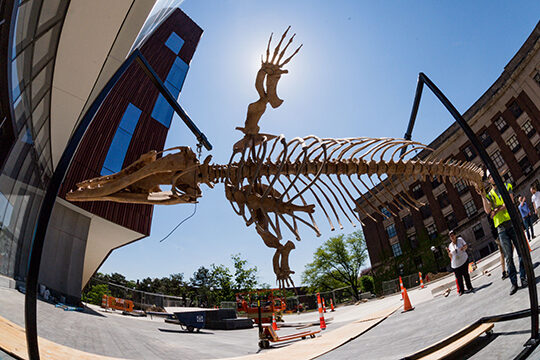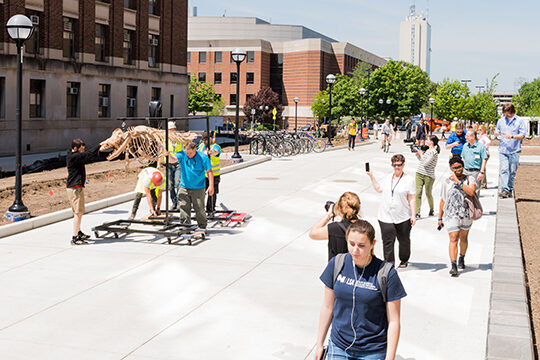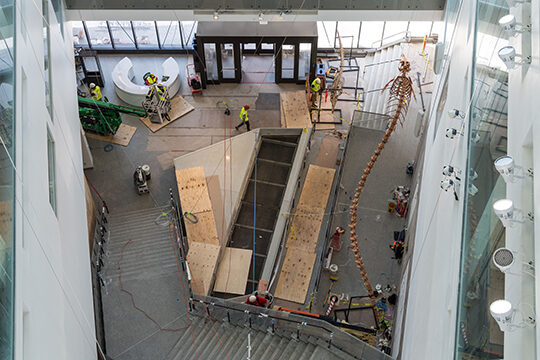Whale of a tale
The University of Michigan Museum of Natural History will offer interactive, “minds-on” exhibits in its new home, opening in April 2019. Till then, experts continue to carefully transport precious specimens from the Ruthven Building to the new Biological Sciences Building. Enjoy this moving experience of two such specimens. (Images by Michigan Photography, unless otherwise noted.)
-
Goodbye to you
Moving is never easy. But it does help when your new home is within walking (or should we say ‘swimming’) distance of your old one. That’s the Biological Sciences Building on the left. The Ruthven Building is on the right. Oh, and that’s Dorudon, the first whale specimen to make itself at home in the new natural history museum. Its companion, Basilosaurus, followed soon after.
-
Moving out
It’s a big day for this prehistoric fellow, known as Dorudon (“spear-tooth”). This Orca-sized, early species of whale from the Eocene Period has not seen the light of day for an estimated 35 million years.
-
Already gone
Sometimes a new environment is just what you need to give your old bones a lift. Long before it was displayed in the natural history museum, the extinct Dorudon lived in warm seas around the world.
-
On the road again
Slow and steady wins the race when you are moving a prehistoric whale on a college campus. If these bones had any meat on them, this creature could weigh between one and two tons, making it as big as the Orca or the Killer Whale.
-
Hit the road, Jack
Just another day on the bustling U-M campus. Watch your step, students!
-
Moving on up
The “skeleton crew” from Research Casting International — specialists in fossil and cast installation and relocation — prepare to hoist the giant whale skeleton skyward.
-
Bust a move
Long accustomed to its perch high atop the Hall of Evolution, this prehistoric creature now hangs in the five-story atrium at the entrance of the new Museum of Natural History.
-
Night moves
Visitors to the Biological Sciences Building may see Basilosaurus and Dorudon high atop the five-story atrium. A trip to the museum’s second floor provides a close-up view of the ancient specimens. This image is taken from the ground floor, looking straight up. (Image by Mike Cherney.)









